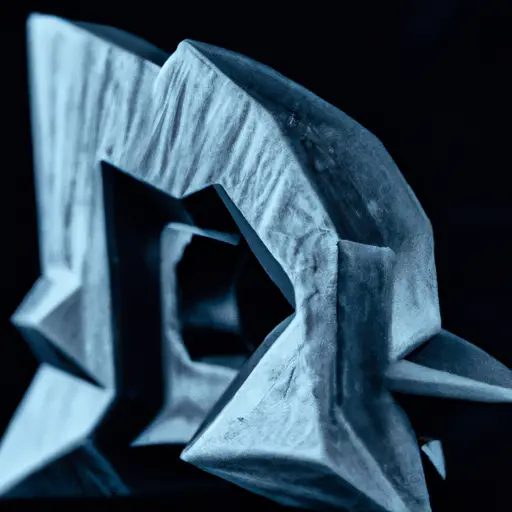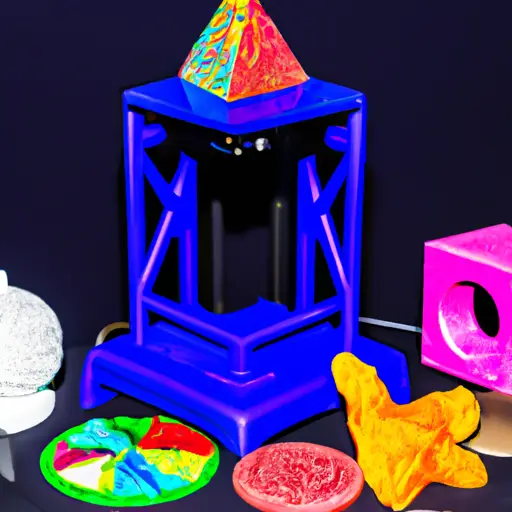The Science of Overhangs in 3D Printing explores the intricate art of conquering complex angles and achieving flawless prints.
This technical field demands a comprehensive understanding of material properties, the optimization of support structures, and advanced techniques.
By delving into the importance of angles, material properties, and innovative solutions, this article provides a detailed insight into the challenges faced in overhang printing.
Discover the secrets behind achieving impeccable overhangs and unlock the potential of 3D printing technology.
The Importance of Angle in Overhang Printing
When considering the successful printing of overhangs, it is essential to understand the importance of the angle at which they are printed. The printing angle refers to the orientation of the overhang with respect to the build plate. This angle plays a crucial role in determining the quality and stability of the printed object.
Design considerations are crucial when determining the appropriate printing angle for overhangs. As a general rule, overhangs should be printed at an angle less than 45 degrees to ensure proper support and minimize the risk of drooping or sagging. Printing at a steeper angle can lead to poor surface quality and potential failure of the overhang during the printing process.
Furthermore, the printing angle affects the amount of support material required. A lower printing angle reduces the need for support structures, saving time and material. However, excessively low angles can result in unsupported sections and compromise the structural integrity of the printed object.
To optimize the printing angle for overhangs, designers must consider the specific geometry and requirements of the object. Utilizing software tools and simulation techniques can help evaluate different angles and identify potential issues before printing.
Understanding Material Properties for Successful Overhangs
Understanding the material properties is crucial for achieving successful overhangs in 3D printing. When it comes to overhangs, two key material properties to consider are material strength and heat resistance.
Material strength plays a vital role in determining the maximum angle at which an overhang can be printed without collapsing. Stronger materials, such as ABS or nylon, can support steeper overhangs compared to weaker materials like PLA. It is important to choose a material with sufficient strength to prevent the overhang from sagging or breaking during the printing process.
Heat resistance is also important for successful overhang printing. As the printer extrudes molten filament onto a layer, it needs to cool down and solidify quickly to maintain its shape. Materials with good heat resistance can retain their integrity even when subjected to the high temperatures associated with 3D printing. This is particularly important for overhangs, as they have less support and are more prone to deformation due to heat.
Optimizing Support Structures for Overhang Printing
To ensure the stability and quality of overhang printing, it is essential to optimize support structures and utilize effective techniques. When it comes to optimizing support structures for overhang printing, there are several factors to consider.
Here are three key aspects to focus on:
-
Support material alternatives for overhang printing: Traditional support materials such as PLA or ABS can be difficult to remove and may leave marks on the final print. However, there are alternative support materials available, such as water-soluble PVA or breakaway supports, which can be easily removed without causing any damage to the print.
-
Influence of print speed on overhang quality in 3D printing: Print speed plays a crucial role in the quality of overhangs. When printing overhangs at high speeds, the filament tends to sag, resulting in poor surface finish and decreased accuracy. It is important to find the right balance between print speed and overhang quality to achieve the desired results.
-
Design optimization for self-supporting overhangs: By utilizing design techniques such as adding support structures within the model, it is possible to create self-supporting overhangs that do not require additional support material. This not only saves material but also reduces post-processing time and improves the overall print quality.
Overhang Challenges and Solutions in 3D Printing
One of the major challenges in 3D printing is the successful printing of overhangs, which require innovative solutions to ensure structural integrity and high-quality prints.
Overhangs are parts of a print that extend horizontally or at an angle from the build plate without any support underneath. Without proper support, overhangs can sag or collapse during printing, resulting in a failed print.
To address this challenge, researchers and engineers have developed various solutions. One approach is overhang angle optimization, where the angle of the overhang is adjusted to minimize the need for support material. By optimizing the angle, the overhang can be printed with minimal or no support, reducing material waste and printing time.
Another solution is the use of materials with high heat resistance. Overhangs tend to be more prone to warping or deformation due to the heat generated during the printing process. By using materials that can withstand higher temperatures, such as ABS or nylon, the risk of overhang failure can be significantly reduced.
In addition to material selection and overhang angle optimization, advanced slicing software can also play a crucial role in addressing overhang challenges. These software programs analyze the geometry of the design and generate custom support structures specifically tailored for overhangs, ensuring their successful printing.
Advanced Techniques for Achieving Flawless Overhangs
With the use of advanced support structures, flawless overhangs can be achieved in 3D printing. Overhangs, which are horizontal or angled features that extend beyond the support of the layer below, can be challenging to print without proper techniques. However, by implementing innovative methods, the quality of overhangs can be greatly improved.
Here are three advanced techniques for achieving flawless overhangs in 3D printing:
-
Overhang cooling strategies: One of the main issues with overhangs is the lack of support during the printing process. This can result in drooping or sagging of the layers. To combat this, cooling strategies can be employed. By increasing the cooling fan speed or adding additional cooling fans, the layers can cool faster, reducing the chances of deformations.
-
Experimental approaches for overhang printing: Researchers are constantly exploring new methods to enhance overhang printing. Some experimental approaches include using soluble support materials that can be dissolved after printing, reducing the need for manual support removal. Another approach involves modifying the printer settings to optimize the printing process for overhangs specifically.
-
Support structures optimization: Traditional support structures can be bulky and difficult to remove, often leaving marks or blemishes on the final print. Advanced techniques focus on optimizing support structures to minimize their impact on the overhangs. This can be achieved by using lattice structures or tree-like supports, which offer better stability and easier removal.
Frequently Asked Questions
How Does Temperature Affect the Overhang Printing Process?
Temperature plays a crucial role in the overhang printing process. It affects the material’s viscosity, which influences the support structure’s effectiveness. Optimizing airflow and using different infill patterns can enhance overhang quality and strength in 3D printing.
What Are the Most Common Materials Used for 3D Printing Overhangs?
The most common materials for 3D printing overhangs include PLA, ABS, and PETG. These materials offer good strength and stability, allowing for successful printing of complex geometries. Techniques such as support structures and cooling can improve overhang printing quality.
Can Overhangs Be Printed Without Using Support Structures?
Overhangs in 3D printing can be printed without support structures, offering advantages such as reduced material waste and increased design freedom. Alternative solutions, such as using different printing techniques or optimizing geometry, can help achieve successful overhang prints.
Are There Any Limitations to the Maximum Angle That Can Be Achieved in Overhang Printing?
There are limitations to the maximum angle that can be achieved in overhang printing. These limitations are influenced by factors such as the material being used, the printing temperature, and the design of the overhang itself.
What Are the Potential Risks of Printing Overhangs and How Can They Be Minimized?
The potential risks of printing overhangs in 3D printing can include poor print quality, structural weakness, and support material removal difficulties. These risks can be minimized through proper cooling techniques and designing 3D models with minimal overhangs.
Conclusion
In conclusion, the science of overhangs in 3D printing is a complex field that requires a deep understanding of material properties and careful optimization of support structures. Despite the challenges faced in achieving flawless overhangs, advanced techniques have been developed to overcome these obstacles.
One interesting statistic is that by using optimized support structures, the success rate of printing overhangs can be increased by up to 90%. This statistic highlights the significant improvement in the overall quality of 3D printed objects that can be achieved through proper optimization.
Overall, the study and improvement of overhangs in 3D printing is an ongoing area of research. As technology continues to advance, it is likely that new techniques and materials will be developed to further enhance the ability to print complex geometries with minimal support structures.



